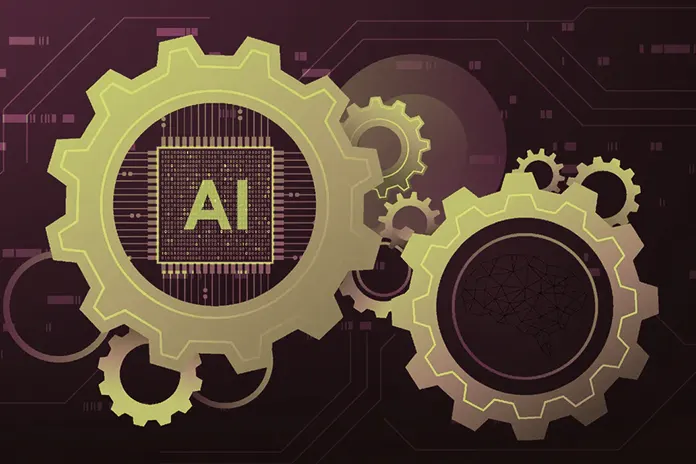If you talk to any CIO these days, you’ll hear that the infrastructure is not what it used to be. The foundational pieces like networks, storage, and servers might still be in the picture. But how do they connect? How are they managed, scaled, and kept secure? That’s evolving faster than ever. And the driver behind that change is artificial intelligence.
For years, AI in infrastructure management was more theory than practice. Organizations experimented with predictive monitoring or automation scripts, but day-to-day operations still ran on human judgment. That’s no longer the case. 2025 AI will become the operational core of many enterprise IT environments. It doesn’t simply assist teams; it actively shapes how infrastructure performs, evolves, and — in some cases — repairs itself.
From “Keeping the Lights On” to Staying Ahead
Historically, infrastructure teams lived in a reactive world. Something broke, and people fixed it. Even the best monitoring tools often functioned as glorified alarms. Now, AI has turned the model on its head.
Modern platforms can detect patterns invisible to humans: a storage subsystem behaving slightly outside its baseline, or application response times hinting at an impending failure. But instead of just alerting someone, these systems can take corrective action. They can rebalance workloads, expand capacity, or apply real-time configuration changes.
That level of proactivity reduces downtime and changes the very role of infrastructure teams. Maintaining the status quo is no longer the focus of their work; instead, they are constantly coordinating systems with business priorities.
AIOps: Combining Intelligence and IT Operations
AIOps platforms are essential AI-driven infrastructure that combine machine learning, analytics, and big data to automate and enhance IT operations. By the end of this year, advanced AIOps systems will integrate data from all tiers—infrastructure, applications, and user behavior.
Correlation engines will identify irregularities, predict outages, and enhance efficiency. For IT teams, they will be more than just tools; they will be co-pilots who use contextual intelligence to steer decisions.
Security at the Pace of Threats
Security is one of the more underappreciated areas where AI makes a difference. Traditional controls are often static, reacting to known signatures or pre-set rules. But threat actors in 2025 aren’t playing by those rules — they’re using automation, polymorphic attacks, and AI.
The new generation of AI-driven security tools provides a counterbalance. These systems learn what “normal” looks like across networks, endpoints, and applications and can spot the faintest deviations. They operate at machine speed, isolating suspicious behavior and containing potential breaches in seconds.
It’s imperfect, and no one in cybersecurity would claim it is. But it’s faster and more adaptive than any human team could hope to be alone.
The Cost and Efficiency Equation
This story also has a convenient side: AI makes infrastructure leaner. Enterprises have historically overprovisioned resources to avoid performance risks, an expensive but common practice. AI helps eliminate that guesswork.
By analyzing real-time workloads, it can scale systems dynamically, reducing waste without compromising performance. The same applies to power consumption. Smart orchestration tools can lower energy use by shutting down idle resources or optimizing cooling systems. For organizations with sustainability targets, this isn’t just a nice-to-have; it’s becoming a requirement.
What This Means for IT Teams
AI hasn’t made your role redundant if you work in infrastructure, but it’s almost certainly changed it. Log analysis and patch management are two routine maintenance tasks that are gradually becoming automated. Now, technical teams can concentrate on more strategic duties like improving user experiences, facilitating digital projects, and designing architectures.
There’s also a cultural shift underway. As one infrastructure leader recently told me, “We’re not just caretakers of systems anymore. We’re collaborators in business strategy.” That’s not hyperbole. As infrastructure gets smarter, the people managing it are expected to bring bigger-picture thinking.
Challenges That Can’t Be Ignored
Of course, there are complications associated with all of this. Integrating AI in environments that rely heavily on legacy systems can be difficult. Governance is another concern. When systems act autonomously, organizations need to define accountability — not just for technical decisions, but for ethical ones.
And then there’s the skills gap. To run AI-enabled infrastructure, you need new skills that combine traditional IT skills with data science and automation knowledge. Companies are trying to improve the skills of their existing workforce while competing for a small pool of skilled workers. These problems are not insignificant and can be resolved with better planning.
A Strategic Imperative
For years, infrastructure was seen as the back-office backbone of the enterprise. In 2025, it has stepped into a new role: an intelligent, responsive platform for business growth.
AI isn’t a layer you “add on” to make systems smarter. It’s a core capability that redefines how those systems work — and, by extension, how organizations compete. Those who embrace it find efficiencies and new ways to align technology with strategy. Those who don’t discover that the gap between maintaining and innovating grows wider every quarter.
For more information visit https://www.yash.com/

